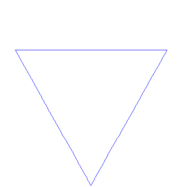Contents
Fractals
| Table of Contents |
|---|
| 1. Introduction |
| 2. Definition and Characteristics |
| 3. Generating Fractals |
| 4. Examples |
| 5. Applications |
1. Introduction
2. Definition and Characteristics
The most commonly used description for fractals is one that Benoit B. Mandelbrot published in his book, The Fractal Geometry of Nature. He says that a fractal is "a rough or fragmented geometric shape that can be split into parts, each of which is (at least approximately) a reduced-size copy of the whole." Additionally, Mandelbrot is the mathematician who coined the term "fractal," and it is derived from the Latin words fractus which means fragmented or broken. Mathematicians do not agree on a single definition, and some mathematicians are against having a strict definition. However, they do agree that there are characteristics common in most fractals that could be used to describe the concept of fractals.


